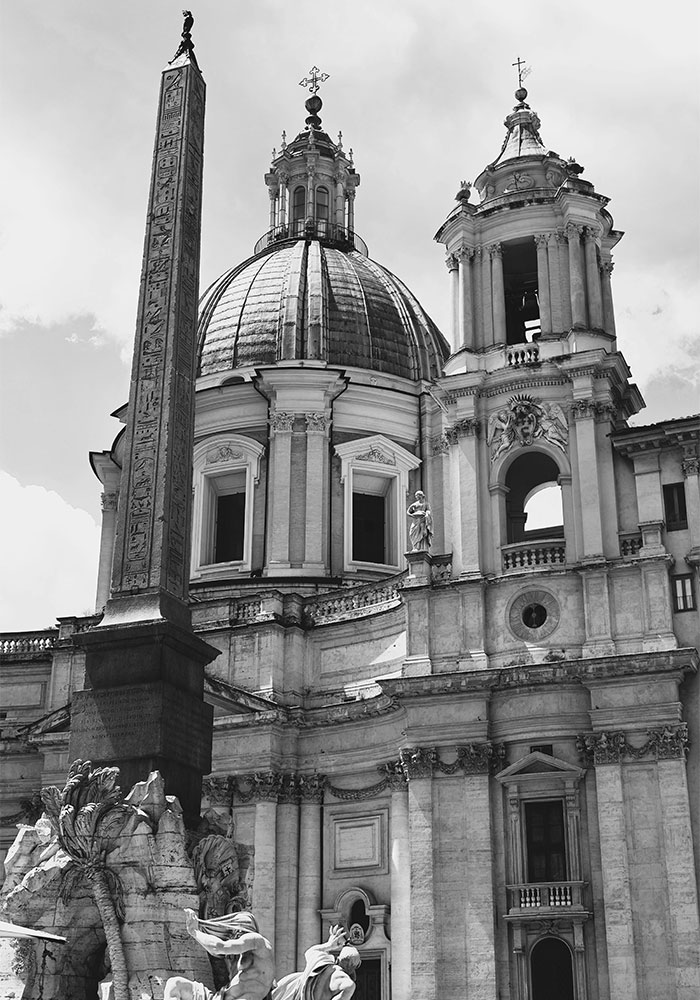
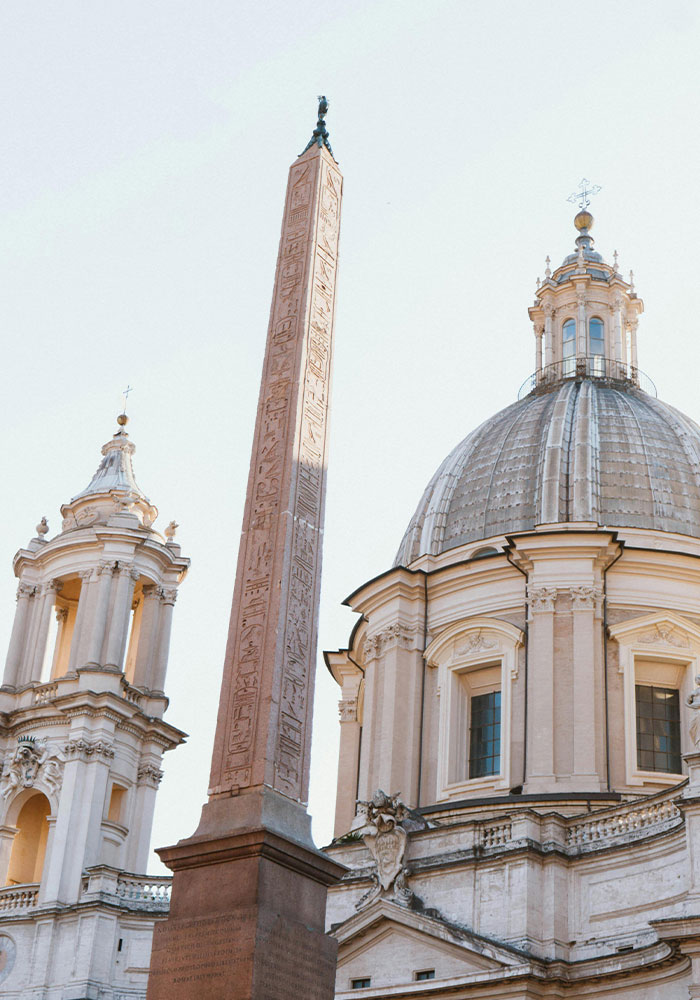
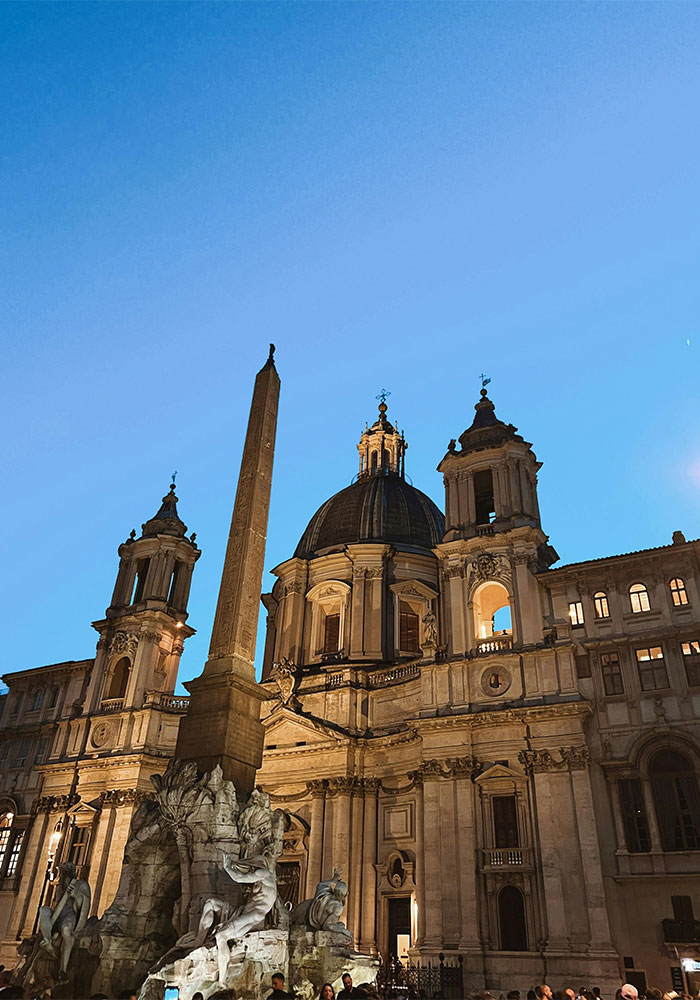
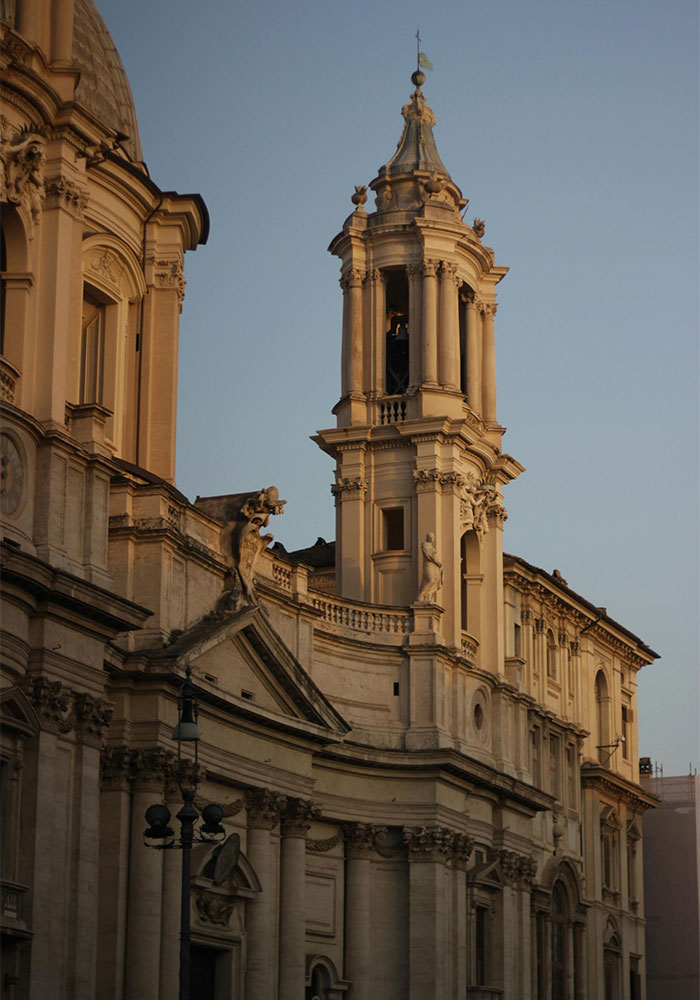
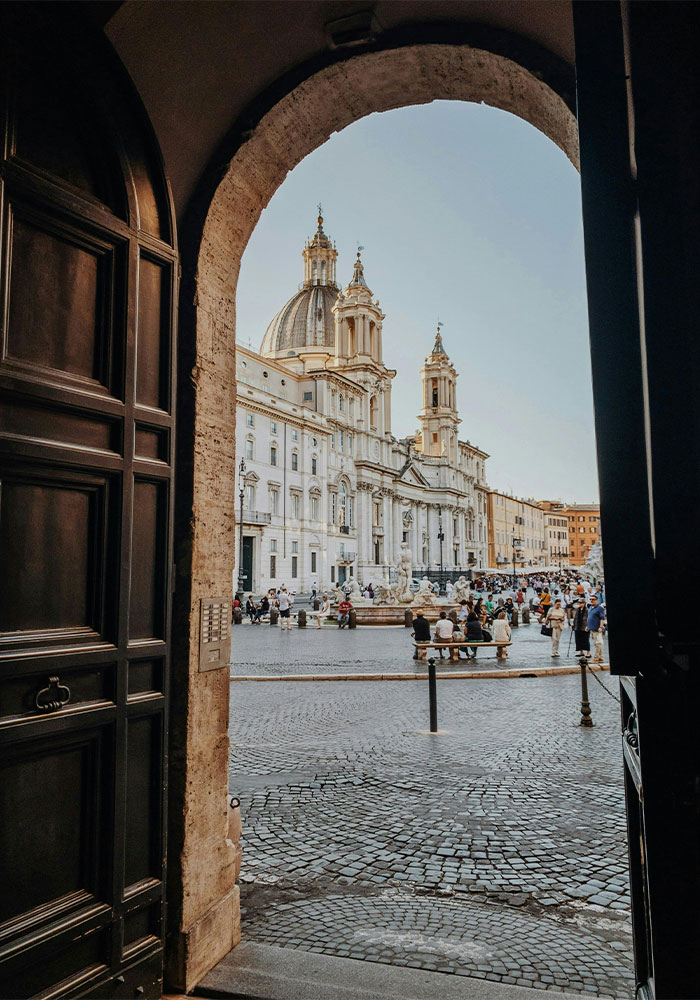
Piazza Navona is one of the most famous and beloved squares in all of Rome. Nestled in the heart of the city, this lively public space is a stunning blend of art, history, and Roman charm. With its grand fountains, beautiful architecture, and vibrant atmosphere, Piazza Navona attracts thousands of visitors each year. Whether you’re a history enthusiast, an art lover, or simply someone who wants to experience the heart and soul of Rome, this iconic square offers something for everyone.
For centuries, Piazza Navona has been a place of gathering, celebration, and beauty. From its origins as an ancient Roman stadium to its transformation into a masterpiece of Baroque architecture, the square’s story is as captivating as the sights you’ll find there. Today, it is a hub of local culture, featuring street artists, performers, and charming cafes that bring the area to life.
In this guide, we’ll take you on a journey through Piazza Navona’s fascinating history, its must-see attractions, and provide you with all the tips you need for a perfect visit. Whether you’re stopping by for a quick look or planning to spend the day, Piazza Navona is sure to leave you enchanted.
Let’s explore this special square together!
Piazza Navona has a long and interesting story. A long time ago, during the Roman Empire, this place was a stadium. It was called Stadium of Domitian. People came here to watch games and races. The stadium could hold more than 30,000 people!
Over time, the stadium changed. The buildings around it were rebuilt. But the shape stayed the same. That is why Piazza Navona still looks like a stadium today.
In the Middle Ages, the stadium was no longer used. People started building homes and shops around it. Slowly, it became a public square. The square was used for markets, events, and festivals.
Later, in the 17th century, important artists and architects helped make it more beautiful. They added fountains, churches, and palaces. This is when Piazza Navona became a Baroque square.
The 1600s were a time of art and beauty in Rome. This is called the Baroque period. Architects wanted to make buildings and fountains that were big and full of detail.
One of the most famous artists of this time was Gian Lorenzo Bernini. He made the main fountain in the square, the Fountain of the Four Rivers. Another famous architect, Francesco Borromini, designed parts of the church Sant’Agnese in Agone. These two men helped turn Piazza Navona into the beautiful place we see today.
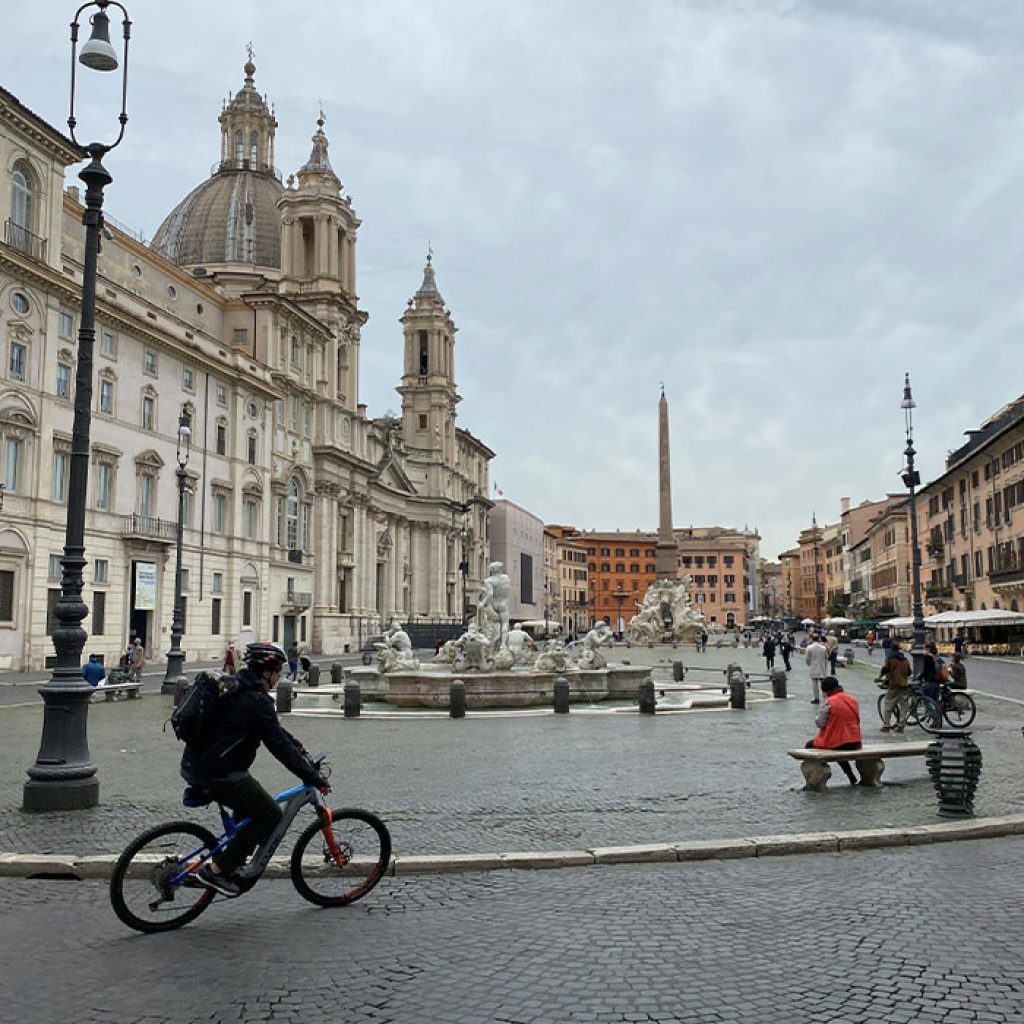
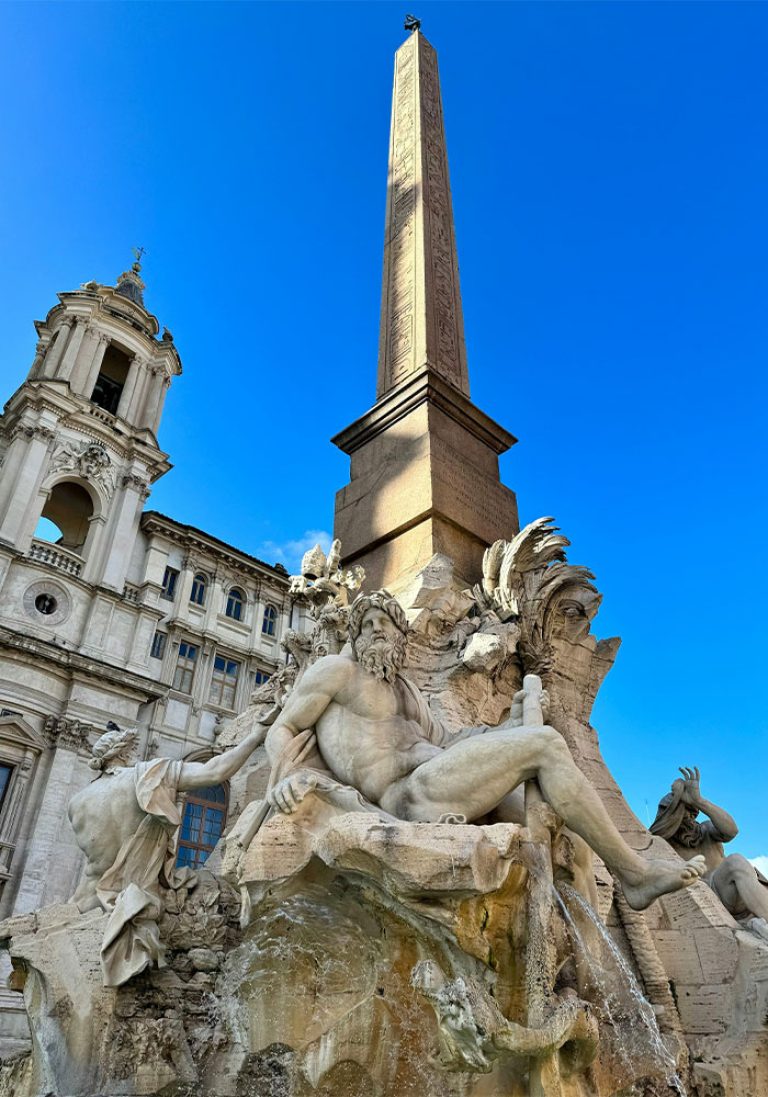
This fountain is in the center of Piazza Navona. It is big and full of amazing details. Bernini built it in 1651. The fountain shows four big rivers from four continents: the Nile (Africa), the Danube (Europe), the Ganges (Asia), and the Río de la Plata (Americas).
Each river is shown as a man. They are sitting on rocks, and water flows around them. There is also an Egyptian obelisk in the middle of the fountain. It looks like the rivers are holding it up.
This is one of the most famous fountains in Rome. You will want to take many photos here!
This beautiful church is right next to the Fountain of the Four Rivers. It has a large dome and two towers. The inside is quiet and peaceful.
The church was built where Saint Agnes died many years ago. Her story is part of Roman history. The church was started by Girolamo Rainaldi, but later Borromini helped finish it.
It’s free to enter, and it’s a great place to rest and enjoy the art inside.
At each end of Piazza Navona, there is a smaller fountain. One is called the Fountain of Neptune. It shows Neptune, the god of the sea, fighting a sea monster. This fountain is at the north end.
The other is the Fountain of the Moor. It shows a man, or “Moor,” standing on a shell, fighting a dolphin. This fountain is at the south end.
Both fountains were added later, and Bernini also worked on one of them. They are very nice and perfect for photos.
Piazza Navona is full of life. Every day, you can see street artists, musicians, and painters. Some people draw your face in just 10 minutes. Others play the violin, guitar, or sing opera songs.
There are also people who act like statues or do funny tricks. They make Piazza Navona feel like a living stage. It is fun for both kids and adults.
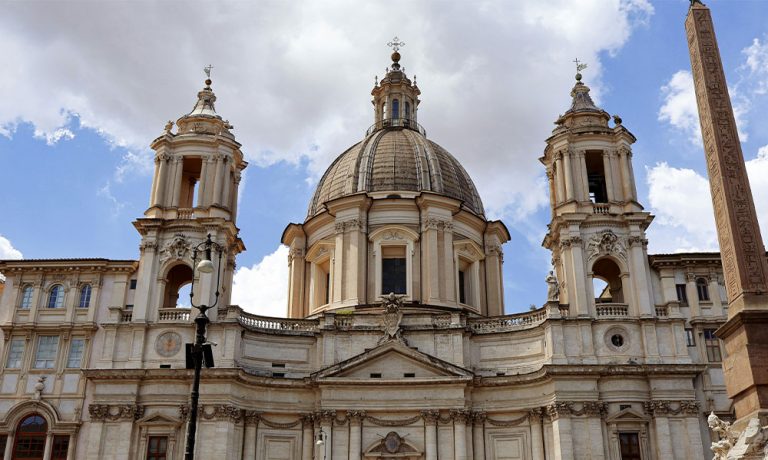
Very close to Piazza Navona, you can find interesting museums. One is the Museo di Roma in Palazzo Braschi. It is right on the square. This museum shows Roman life, art, and history.
Another is the Museo Nazionale Romano, which has many old Roman items. If you like learning about the past, these museums are great.
Piazza Navona is full of cafés and restaurants. You can sit at a table, drink a coffee, and watch people walk by. Many places serve traditional Roman food like pasta carbonara, saltimbocca, and gelato.
Prices can be a bit high in the square, but the view is worth it. For cheaper food, walk a little outside the square.
During the holidays, Piazza Navona becomes even more special. In December, there is a Christmas Market. You can buy toys, candy, and decorations. There are also games and sometimes a small carousel.
In the summer, there are night shows and art markets. No matter when you visit, something is always happening.
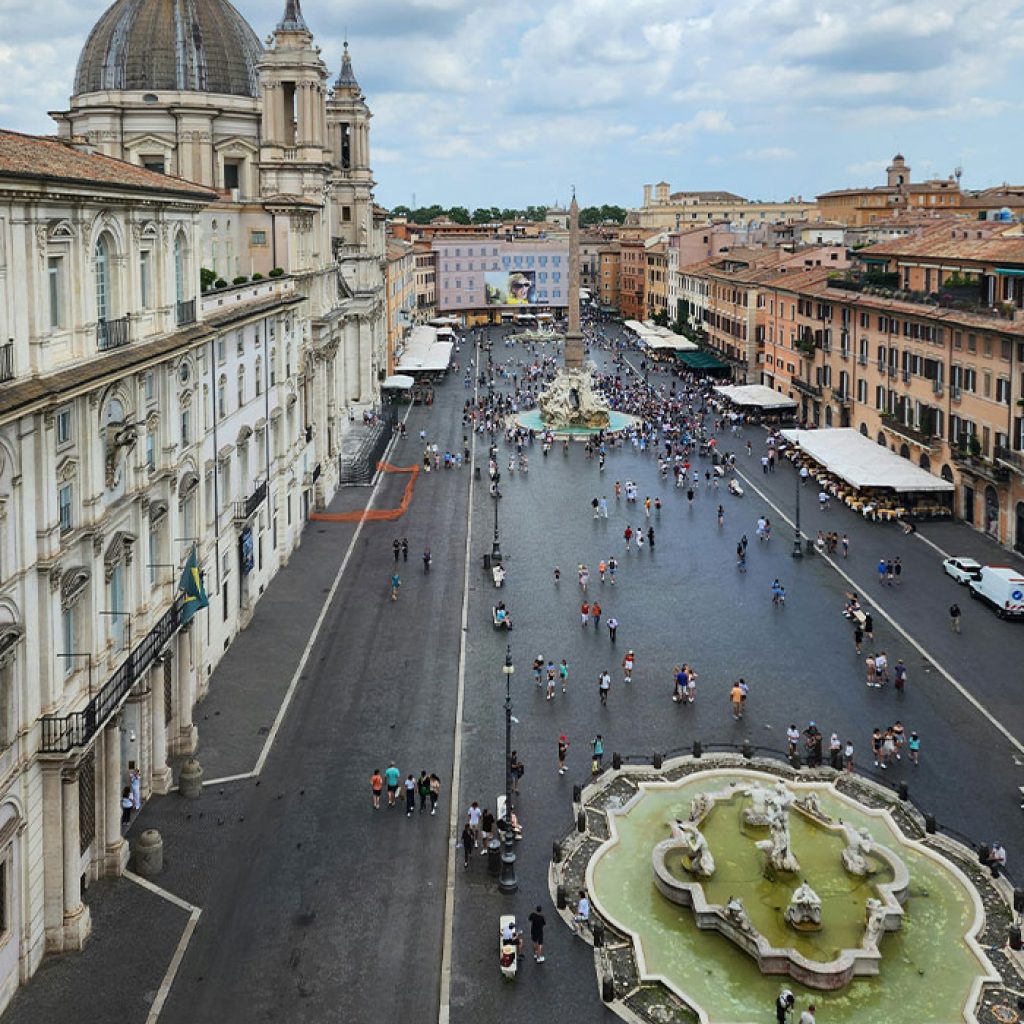
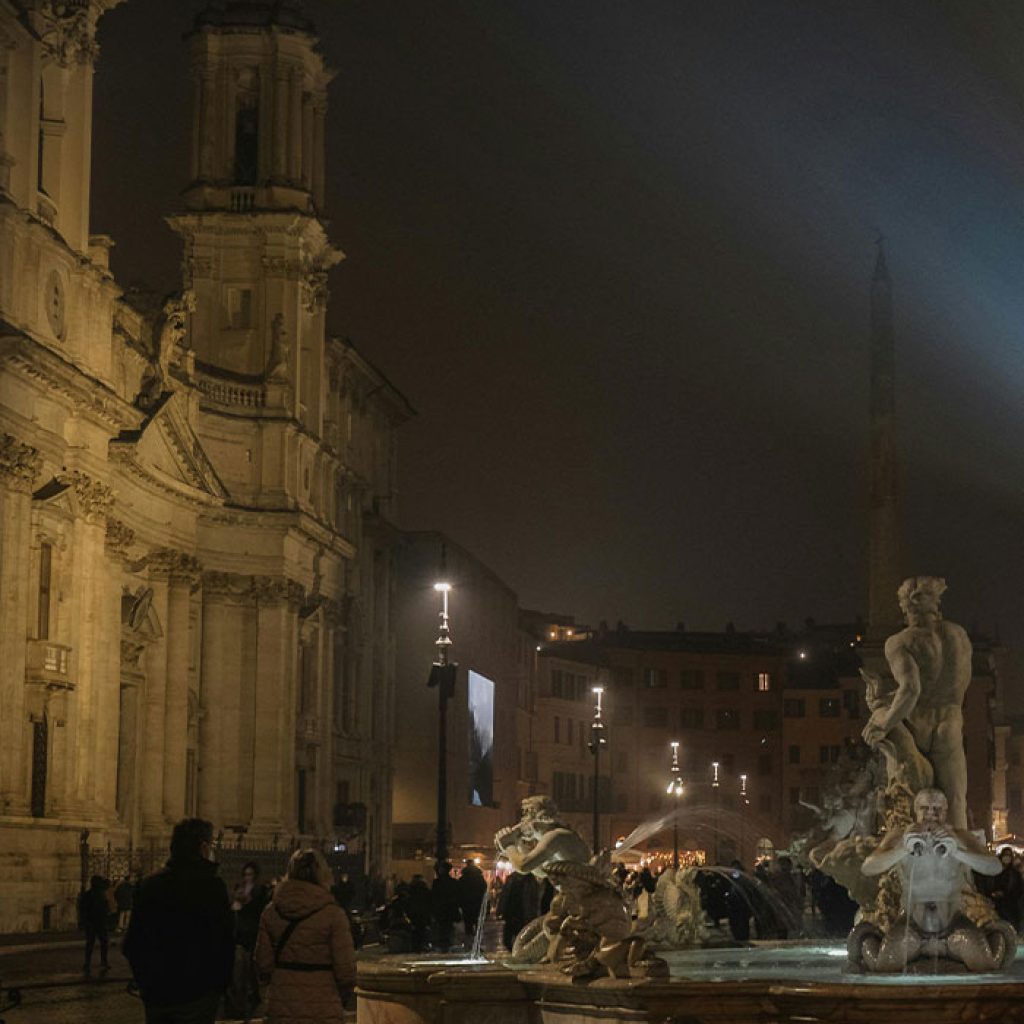
Piazza Navona is open all day, every day. It is free to enter. But the best time to visit is early in the morning or late in the afternoon. These times are less crowded.
In spring and fall, the weather is nice and not too hot. In summer, it can be very warm and full of tourists.
At night, the lights make the square look magical. It’s a great time for photos.
Piazza Navona is in the center of Rome. It’s easy to get there by walking, bus, or taxi.
There is no metro station right at Piazza Navona, but it’s easy to reach on foot.
A walking tour is a great way to learn more about Piazza Navona. A guide can tell you stories and facts you might not know. You can ask questions and hear fun details about the fountains and buildings.
Some tours also include other places nearby, like the Pantheon, Campo de’ Fiori, or Trevi Fountain
Many visitors like to see more in one trip. You can start at Piazza Navona, then walk to the Pantheon. After that, visit Campo de’ Fiori for a snack. Then, head to the Trevi Fountain.
This makes a fun and easy walking route in Rome.
The Pantheon is one of the best-kept buildings from ancient Rome. It is only a short walk from Piazza Navona. The large dome and open sky window are amazing. It is free to visit, but sometimes there is a line.
This lively square has a market during the day and fun bars at night. You can buy fresh food, flowers, or souvenirs. At night, it is a great place to have a drink.
If you keep walking, you will reach the Trevi Fountain. Don’t forget to throw a coin into the water. People say this will bring you back to Rome!
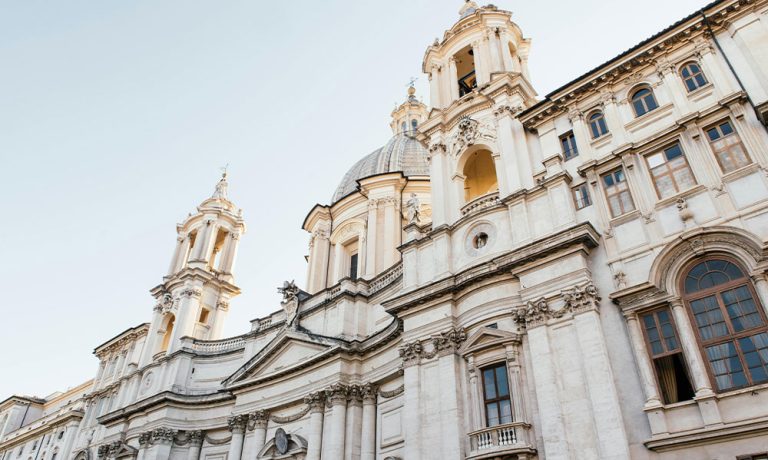
Yes! Piazza Navona is a public space. You don’t have to pay to enter. The fountains and the church are free, too.
Yes, you can! There are many cafés and restaurants around the square. You can have a coffee, gelato, or a full meal. Prices are higher here because of the location.
Yes, it is usually safe. Many people come here at night to enjoy the lights and cool air. Just be careful with your bags and wallets, like in any big city.
On average, most visitors spend about an hour or two exploring the square. However, if you want to sit, relax, enjoy a meal, or take in the art and performances, you could easily spend longer.
Yes, there are public restrooms located near the square, but they may not always be very clean. Many cafés and restaurants will allow you to use their facilities if you’re a customer.
Yes, Piazza Navona is stroller-friendly. The square is spacious, and the cobblestones are not too uneven, so it’s easy to move around with a stroller.
Yes, there are small souvenir stands and shops around the square selling art, postcards, and Roman-themed items. However, for a wider selection of souvenirs, you may want to explore nearby areas like Via del Corso.
Absolutely! Piazza Navona is a popular spot for photography. Take plenty of pictures of the fountains, the beautiful architecture, and the lively atmosphere. Just be mindful of street performers and others when you’re snapping your shots.
Yes, the square is generally accessible for people in wheelchairs, although some areas with cobblestones may be a bit bumpy. The fountains and other attractions can be enjoyed from accessible viewpoints.
Piazza Navona itself is open all the time, as it is a public square. However, individual cafés, restaurants, and attractions around the square may have their own opening and closing hours.
Yes, pets are allowed in Piazza Navona, but they should be kept on a leash at all times. Be mindful of the crowds and street performers, as they can get busy, especially during peak hours.
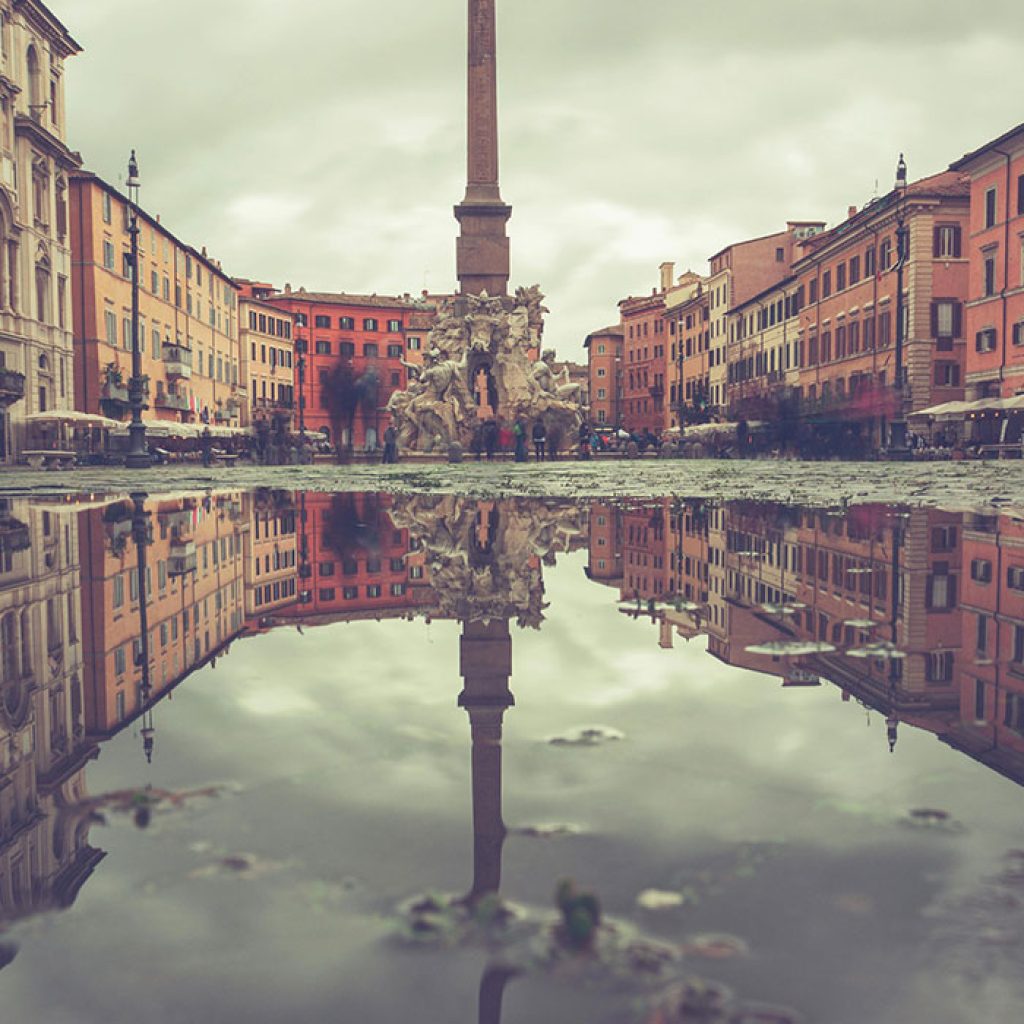
Piazza Navona is not just a square. It is a place full of life, art, history, and beauty. It shows the best of Roman Baroque style. Whether you come to relax, take photos, or learn about the past, you will enjoy every moment here.
Don’t miss it on your trip to Rome. It’s one of the best Rome attractions, and it will give you memories you will never forget.